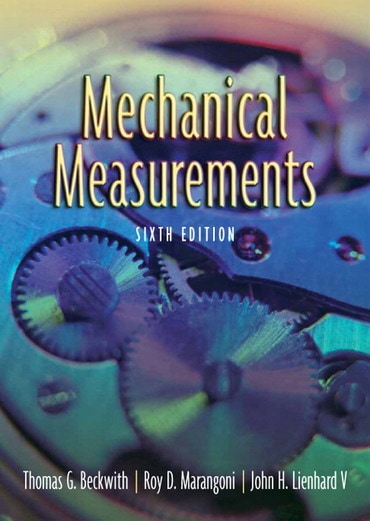
- Thomas G. Beckwith |
- Roy D. Marangoni |
Title overview
For courses in Measurement and Instrumentation offered in departments of Engineering.
This much-anticipated revision to the definitive mechanical measurements text continues to set the standard. Emphasizing precision and clarity, the authors cover fundamental issues common to all areas of measurement in Part One, then present individual chapters on applied areas of measurement in Part Two. The text’s modular format makes it accessible to undergraduate students of most engineering disciplines, particularly mechanical engineering, aerospace engineering, and engineering technology.
• Flexible presentation – Fits several different course formats and accommodates a wide variety of skill levels.
• Separate areas of applied measurements – Help students see the relevance of mechanical measurement to their own field of interest and offer motivation by addressing real-world measurement problems.
• Fully modernized and expanded coverage of thermocouples; extensively revises material on radiation pyrometery, temperature measurement error, and calibration.
• Updated coverage of flow meters to reflect the latest standards.
• Hypothesis testing incorporated into the material on data treatment, uncertainty and error analysis; Chi-squared testing statistics have been expanded and reorganized.
• Updated and expanded digital techniques – Includes digital imaging and digital signal processors; modern computer buses are covered.
• Modern photodetectors added to the material.
• Discussion of modern frequency sources and phase-lock loops.
• Revised accelerometer calibration methods to reflect improvement in sensor technology.
• New problems added to supplement new text material.
• Elimination of obsolescent instrumentation throughout the text.
Table of contents
Preface xv
Part I Fundamentals of Mechanical Measurement
1 The Process of Measurement: An Overview
2 Standards and Dimensional Units of Measurement
3 Assessing and Presenting Experimental Data
4 The Analog Measurand: Time-Dependent Characteristics
5 The Response of Measuring Systems
6 Sensors
7 Signal Conditioning
8 Digital Techniques in Mechanical Measurements
9 Readout and Data Processing
Part II Applied Mechanical Measurements
10 Measurement of Count, EPUT, Time Interval, and Frequency Measurement of Count, Events per Unit Time, Time Interval, and Frequency
11 Displacement and Dimensional Measurement
12 Strain and Stress: Measurement and Analysis
13 Measurement of Force and Torque
14 Measurement of Pressure
15 Measurement of Fluid Flow
16 Temperature Measurements
17 Measurement of Motion
18 Acoustical Measurements
Part III Appendices
A Standards and Conversion Equations
B Theoretical Basis for Fourier Analysis
C Number Systems
D Some Useful Data
E Stress and Strain Relationships
E.1 The General Plane Stress Situation
E.2 Direction and Magnitudes of Principal Stresses
E.3 Variation in Shear Stress with Direction
E.4 Shear Stress on Principal Planes
E.5 General Stress Equations in Terms of Principal Stresses
E.6 Mohr’s Circle for Stress
E.7 Strain at a Point
F Statistical Tests of Least Squares Fits
Answers to Selected Problems